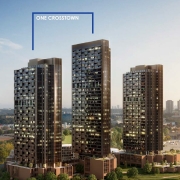The topic of housing supply isn’t front and centre of the affordability discussion like it was just a few months ago.
Despite housing affordability in the first quarter posting its worst decline “in a generation,” according to recent data from National Bank of Canada, the public’s focus is now squarely on inflation, rising interest rates and falling home prices.
And for good reason. Inflation is at a 30-year high, mortgage rates have more than doubled from their record-lows of last year and the average national home price is down 8%, as of April, from its February peak. In many local markets, prices are down well in the double-digits.
However, the lack of new housing supply remains the root cause of housing un-affordability in Ontario. At least that was the consensus of a virtual panel discussion last week hosted by Teranet.
Its panelists included Tim Hudak, CEO of the Ontario Real Estate Association (OREA), Jason Mercer, chief market analyst for the Toronto Regional Real Estate Board (TRREB), and Joe Vaccaro, founder and president of RIOS Real Estate Operating System.
All three were in agreement that new housing construction isn’t keeping up with demand, in large part due to the province’s rapidly growing population.
“Most new Canadians want to be in the Greater Golden Horseshoe because it’s where the opportunity is,” said Mercer. “Also, unlike previous generations of immigrants, today’s new Canadians are coming with education and money to invest in homeownership. So, the market is getting bigger every year and the supply doesn’t change.”
Ontario welcomed 107,865 immigrants between July 1, 2020, and June 30, 2021, and that was down from the previous year due to COVID restrictions. In 2019, over 150,000 people moved to Ontario.
Hudak reminded the panel that demand pressures aren’t just being felt in the GTA.
The topic of housing supply isn’t front and centre of the affordability discussion like it was just a few months ago.
Despite housing affordability in the first quarter posting its worst decline “in a generation,” according to recent data from National Bank of Canada, the public’s focus is now squarely on inflation, rising interest rates and falling home prices.
And for good reason. Inflation is at a 30-year high, mortgage rates have more than doubled from their record-lows of last year and the average national home price is down 8%, as of April, from its February peak. In many local markets, prices are down well in the double-digits.
However, the lack of new housing supply remains the root cause of housing un-affordability in Ontario. At least that was the consensus of a virtual panel discussion last week hosted by Teranet.
Its panelists included Tim Hudak, CEO of the Ontario Real Estate Association (OREA), Jason Mercer, chief market analyst for the Toronto Regional Real Estate Board (TRREB), and Joe Vaccaro, founder and president of RIOS Real Estate Operating System.
All three were in agreement that new housing construction isn’t keeping up with demand, in large part due to the province’s rapidly growing population.
“Most new Canadians want to be in the Greater Golden Horseshoe because it’s where the opportunity is,” said Mercer. “Also, unlike previous generations of immigrants, today’s new Canadians are coming with education and money to invest in homeownership. So, the market is getting bigger every year and the supply doesn’t change.”
Ontario welcomed 107,865 immigrants between July 1, 2020, and June 30, 2021, and that was down from the previous year due to COVID restrictions. In 2019, over 150,000 people moved to Ontario.
Hudak reminded the panel that demand pressures aren’t just being felt in the GTA.






 Maziar Moini, Broker of Record - Home Leader Realty Inc.
300 Richmond St. W., #300, Toronto, ON M5V-1X2
Maziar Moini, Broker of Record - Home Leader Realty Inc.
300 Richmond St. W., #300, Toronto, ON M5V-1X2



